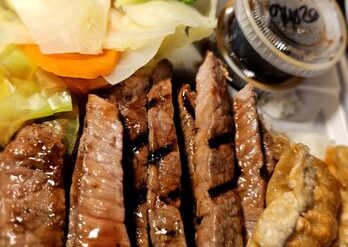Is Corn Starch the Same as Corn Flour? Unveiling the Truth for Curious Parents
Hello, Super Moms and Dads out there! Today, we’re diving into the kitchen and unraveling a mystery that has puzzled many: Is corn starch the same as corn flour? It’s a simple inquiry, but the answer is not quite as straightforward. Understanding these two kitchen staples can do wonders for your cooking and your peace of mind, especially when you’re whipping up those nutritious goodies for the little ones!
Understanding Corn Starch and Corn Flour
Corn starch and corn flour are both derived from corn, but they’re processed and used quite differently. Knowing their unique characteristics can help you choose the right ingredient for your meal prep and even provide some nifty culinary hacks!
Texture, Taste, and Use: Distinguishing the Twins
First things first, let’s get the differences crystal clear:
- Corn Starch – It’s a fine, white powder that’s extracted from the endosperm of the corn kernel. It’s primarily used as a thickening agent in soups, sauces, and gravies. Corn starch has no flavor, so it won’t alter the taste of your dishes, making it a stealthy kitchen ninja!
- Corn Flour – This is the whole corn kernel, milled into a finer powder. It can be either white or yellow, depending on the type of corn it’s ground from. Corn flour has a subtly sweet, corny flavor and is often used in baking, breading, and as a thickener with a bit of a texture and taste boost. It’s a fantastic way to sock in some extra goodness into pancakes, muffins, and bread!
Nutritional Showdown: Corn Starch vs. Corn Flour
When it comes to nutrition, both corn starch and corn flour have their pluses and minuses. Here’s the scoop on how they stack up:
- Corn starch is mostly a carbohydrate, with a minimal amount of protein or fats. It’s not the belle of the nutritional ball, but it’s great for energy provision.
- Corn flour, on the other hand, contains some fiber, protein, and vitamins, thanks to its less refined state. It elevates recipes not just in flavor but also in health benefits.
So, before you reach for that canister, think about the dietary needs of your family and the desired outcome of your dish.
Is One a Better Choice for Children?
For the kiddos, nutrition always takes center stage. If you’re baking or cooking from scratch, opting for corn flour can be a better alternative, giving those growing bodies more of what they need. But don’t dismiss corn starch entirely! It’s a lifesaver when you need that creamy consistency in a quick veggie soup or homemade pudding—just remember, a little goes a long way!
Now that you’re armed with the basics, you can navigate the maize maze with ease! But the corny conversation doesn’t end here. Stay tuned as we dive deeper and let the kernels of knowledge pop!
So, let’s keep this culinary exploration going, and make sure your children’s meals are not just delicious but also wonderfully wholesome. After all, informed choices in the kitchen lead to happy and healthy tummies. See you in the next section where we’ll further explore recipes, tips, and tricks for using corn starch and corn flour in your family-friendly meals!

5 Essential Tips for Parents: Preparing Meals with Corn Starch and Corn Flour
1. Understanding Shelf Life and Storage
One of the first things for parents to note is the shelf life and optimal storage conditions for both corn starch and corn flour. Corn starch has a long shelf life when stored in a cool, dry place, away from moisture which can cause clumping. Corn flour, due to its higher fat content from the whole kernel, can go rancid over time. It is best kept refrigerated in an airtight container to extend its freshness. This ensures your pantry is prepped for healthy, convenient cooking whenever needed!
2. Making Kid-Friendly, Allergy-Safe Recipes
Given the rise in food sensitivities, choosing gluten-free alternatives like corn starch and corn flour can be instrumental in cooking for children with allergies. They are naturally gluten-free options perfect for thickening sauces or baking treats. But do ensure that the products you buy are certified gluten-free to avoid cross-contamination if celiac disease or gluten intolerance is a concern.
3. Balancing Out Meals Nutritiously
When preparing family meals, it’s important to strike a nutritional balance. Corn flour, with its fiber and protein, can be a nutritious addition. You can seamlessly integrate it into recipes such as cornbread, tortillas, or muffins. On the other hand, while corn starch is low in nutrients, it’s an excellent thickener for fruit fillings in desserts or to achieve the perfect consistency in soups all without adding a discernible flavor of its own.
4. Mastering the Art of Thickening
Thickening sauces, stews, and gravies is often necessary in cooking. Corn starch is very effective for this without altering taste. Mix corn starch with an equal amount of cold water to create a slurry before adding it to your hot dishes this prevents clumping. When using corn flour as a thickener, you may need to use more quantity due to its coarser texture and remember that it can impart a mild corn flavor.
5. Exploring Healthy Snack and Meal Ideas
Both corn starch and corn flour are incredibly versatile! Whip up a batch of homemade corn tortillas with corn flour for a fun taco night with the kids, or craft your own crispy, oven-baked chicken tenders coated in corn flour. Meanwhile, corn starch can be the base for delightful puddings or used as a crisp coating for frying fruits or vegetables. The key is to get creative and involve the kids in the cooking process for some family fun in the kitchen!
Armed with these insightful tips, you’re now ready to navigate any recipe that comes your way. Whether it’s thickening up a hearty stew with corn starch or baking a nutritious cornbread with corn flour, you’re all set to bring out the best in your culinary creations. Keep in mind that knowing the differences, storage tips, nutritional aspects, and practical uses of these ingredients will help you elevate your family’s meals, ensuring they are both delicious and nutritionally beneficial. Happy cooking, dear parents!
For more great articles please see here. For more information see here
Disclaimer
The articles available via our website provide general information only and we strongly urge readers to exercise caution and conduct their own thorough research and fact-checking. The information presented should not be taken as absolute truth, and, to the maximum extent permitted by law, we will not be held liable for any inaccuracies or errors in the content. It is essential for individuals to independently verify and validate the information before making any decisions or taking any actions based on the articles.




